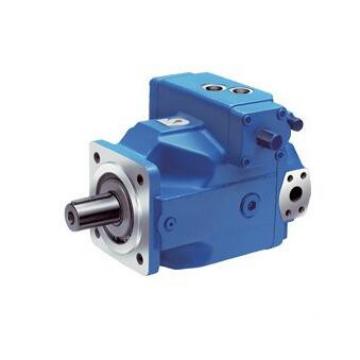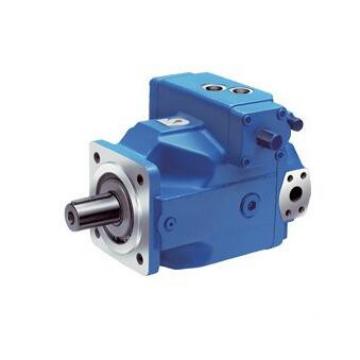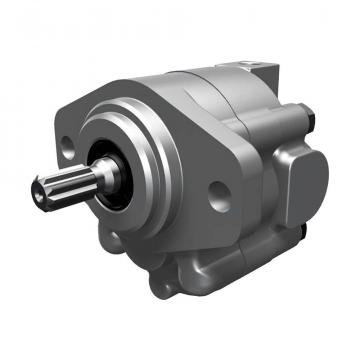Home> Company News> A Simple 1 Pump Hydraulic Setup
- AddressTianqiao, Beiyuan District, Jinan,Shandong
- Worktime9:00-18:00(Beijing time)
- Phone(Working Time)0531-8299 9953
Hydraulic systems are commonly used in various industries to generate and transmit power through the use of fluids. One of the key factors that determine the performance of a hydraulic system is its setup. Proper hydraulic system setup is essential to ensure optimal efficiency, safety, and longevity of the system. In this guide, we will discuss the benefits of using a 1 pump hydraulic setup and its significance in the hydraulic system setup. We will also provide an overview of the components of a 1 pump hydraulic system and the machinery or equipment that are compatible with this setup.
Understanding 1 Pump Hydraulic System
A hydraulic system is a type of power transmission system that uses fluid pressure to generate force. It involves the use of a pump, valves, hoses, and cylinders to transmit power from one location to another. A 1 pump hydraulic setup refers to a hydraulic system that uses a single pump to generate pressure for the system.
In a 1 pump hydraulic setup, the pump generates pressure by moving hydraulic fluid through the system. The fluid flows through hoses to various valves and cylinders, where it generates force to move machinery or equipment. The system is designed to operate efficiently and reliably, with minimal downtime or maintenance.
There are several types of machinery and equipment that are compatible with a 1 pump hydraulic setup. These include excavators, loaders, backhoes, and skid steer loaders, among others. By using a 1 pump hydraulic setup, these machines can be powered more efficiently and with greater precision, allowing for greater control and accuracy during operation.
Overall, a 1 pump hydraulic setup is an essential component of many types of machinery and equipment. By understanding its components and functions, operators can ensure that their equipment operates at optimal efficiency and performance.
Installation of 1 Pump Hydraulic Setup
Installing a 1 pump hydraulic setup requires proper planning and execution to ensure optimal performance and longevity of the system. Here are the steps to follow when installing a 1 pump hydraulic setup:
-
Gather the necessary tools and equipment: Before starting the installation process, ensure that you have all the tools and equipment needed for the job. Some of the tools you will need include a wrench, hydraulic hoses, hydraulic fittings, hydraulic oil, and a hydraulic pump.
-
Choose the right location: Identify the best location for the hydraulic pump and hydraulic fluid reservoir. The location should be easily accessible and provide enough space for future maintenance and repairs.
-
Mount the hydraulic pump: Mount the hydraulic pump to a solid and stable surface using bolts and nuts. Ensure that the pump is level and securely fastened to avoid any vibration or movement during operation.
-
Install the hydraulic fluid reservoir: Install the hydraulic fluid reservoir in a location that is easily accessible and close to the hydraulic pump. The reservoir should also be mounted securely and level to prevent any fluid leaks.
-
Connect the hydraulic hoses: Connect the hydraulic hoses to the hydraulic pump and hydraulic fluid reservoir. Ensure that the hoses are properly tightened and free from any kinks or bends that may restrict fluid flow.
-
Install the hydraulic fittings: Install the hydraulic fittings at the end of each hose to ensure a secure connection to the hydraulic pump and fluid reservoir. Use a wrench to tighten the fittings to the appropriate torque specification.
-
Fill the hydraulic fluid reservoir: Fill the hydraulic fluid reservoir with the recommended hydraulic oil. Use a funnel to prevent any spills or contamination of the hydraulic fluid.
-
Bleed the system: Bleed the system by opening the hydraulic valve and allowing the fluid to flow until all air bubbles are eliminated. This process ensures that the hydraulic pump is primed and ready for operation.
-
Test the system: Once the installation is complete, test the hydraulic pump system to ensure that it is functioning properly. Check for any leaks, and ensure that the hydraulic pressure and flow rate are within the recommended limits.
By following these steps, you can install a 1 pump hydraulic setup correctly and avoid common mistakes that may affect its performance or cause damage to the system.

Maintenance and Troubleshooting of 1 Pump Hydraulic Setup
Proper maintenance is essential to ensure the longevity and optimal performance of a 1 pump hydraulic setup. Routine maintenance practices should be conducted regularly to ensure that the system is working efficiently and safely. Below are some important tips to consider for maintaining and troubleshooting a 1 pump hydraulic setup.
Maintenance
Check Fluid Levels
One of the most critical maintenance tasks is checking the fluid level of the hydraulic system. Low fluid levels can cause damage to the hydraulic system, resulting in poor performance and potential equipment failure. It is essential to check the fluid level regularly and top it up if necessary.
Monitor Fluid Condition
The hydraulic fluid in the system should also be monitored regularly to ensure that it is clean and free of contaminants. Over time, the fluid may become contaminated with dirt, debris, and other particles that can cause damage to the system. It is important to replace the fluid as needed and ensure that it is clean and free from contaminants.
Inspect Hoses and Fittings
The hoses and fittings of the hydraulic system should also be inspected regularly for wear and tear, leaks, and other issues. Damaged hoses and fittings can cause the system to malfunction, resulting in poor performance and safety risks. Any damaged components should be replaced promptly.
Check for Leaks
Leaks in the hydraulic system can cause a loss of pressure and fluid, leading to poor performance and potential safety hazards. Regularly checking for leaks in the system and fixing them promptly is essential to ensure optimal performance and safety.
Troubleshooting
Identifying Common Issues
Some common issues that may arise with a 1 pump hydraulic setup include low fluid levels, contaminated fluid, damaged hoses or fittings, and leaks. It is important to be able to identify these issues early on and address them promptly to avoid further damage to the system.
Addressing Common Issues
Low fluid levels can be addressed by topping up the fluid as needed, while contaminated fluid can be replaced with clean fluid. Damaged hoses and fittings should be replaced promptly to prevent safety hazards and further damage to the system. Leaks in the system should be fixed promptly to avoid a loss of pressure and fluid.
Replacing Damaged Components
If a component in the hydraulic system is damaged beyond repair, it may need to be replaced. It is essential to replace damaged components with high-quality and durable replacements to ensure the longevity and optimal performance of the system.
Proper maintenance and prompt troubleshooting of common issues are essential for ensuring the longevity and optimal performance of a 1 pump hydraulic setup. By monitoring fluid levels, inspecting hoses and fittings, checking for leaks, and addressing common issues promptly, operators can ensure the safety and performance of their hydraulic system.
Advantages and Disadvantages of 1 Pump Hydraulic Setup
A 1 pump hydraulic setup offers several advantages and disadvantages compared to other hydraulic setups. Understanding these can help determine whether a 1 pump hydraulic setup is suitable for your machinery or equipment.
Advantages:
-
Simplicity: A 1 pump hydraulic system is a simple setup, making it easy to install and maintain. This makes it ideal for equipment that requires simple hydraulic functions.
-
Cost-effective: The simplicity of a 1 pump hydraulic setup makes it less expensive than other hydraulic setups. If you have a limited budget, a 1 pump hydraulic system could be the perfect solution.
-
Energy-efficient: A 1 pump hydraulic system requires less energy to operate, which means less fuel or electricity consumption. This makes it a cost-effective and eco-friendly option.
-
Reduced risk of failure: A 1 pump hydraulic system has fewer components, which reduces the risk of system failure. This is especially beneficial for equipment that needs to operate continuously without interruption.
-
Increased safety: With fewer components, a 1 pump hydraulic system is easier to operate and maintain, reducing the risk of accidents or injuries.
Disadvantages:
-
Limited capabilities: A 1 pump hydraulic system has limited capabilities compared to other hydraulic systems. It may not be suitable for equipment that requires complex hydraulic functions.
-
Limited power: A 1 pump hydraulic system is not as powerful as other hydraulic setups. It may not be suitable for heavy-duty equipment that requires high power output.
-
Limited speed: A 1 pump hydraulic system may not be suitable for equipment that requires fast hydraulic functions due to its limited speed capabilities.
-
Limited range of applications: A 1 pump hydraulic system may not be suitable for all types of machinery or equipment, as it has limited compatibility with certain systems.
-
Maintenance requirements: While a 1 pump hydraulic system is easy to maintain, it still requires regular maintenance to ensure optimal performance. Failure to maintain the system can result in reduced efficiency and performance.
Overall, a 1 pump hydraulic system is a cost-effective and simple solution for equipment that requires basic hydraulic functions. However, it may not be suitable for more complex equipment that requires higher power output and speed capabilities. It is essential to consider the specific needs of your equipment before deciding whether a 1 pump hydraulic system is the right choice.
Safety Precautions
Hydraulic systems can be dangerous if not handled properly. As such, it is important to observe safety precautions when installing, operating, and maintaining a 1 pump hydraulic setup. Here are some safety precautions to consider:
-
Wear appropriate personal protective equipment (PPE) such as gloves, safety glasses, and work boots to protect yourself from injury.
-
Always turn off the engine and relieve the hydraulic pressure before performing any maintenance or repair work on the system.
-
Keep your work area clean and free of clutter to avoid tripping hazards.
-
Use caution when handling hydraulic fluid as it can be flammable and toxic. Avoid skin contact and properly dispose of used fluids.
-
Do not operate the hydraulic system beyond its intended capacity. Doing so can cause the system to fail, leading to injury or equipment damage.
-
Make sure all components of the hydraulic system are properly secured and installed. Loose hoses, fittings, or components can cause leaks and other hazards.
-
Regularly inspect the hydraulic system for signs of wear or damage. Address any issues promptly to avoid more costly repairs down the line.
Observing these safety precautions can help to ensure that the 1 pump hydraulic setup is operated safely and effectively, minimizing the risk of injury or damage to equipment.

In conclusion, a 1 pump hydraulic setup is an essential component of various types of machinery and equipment. Understanding its components, functions, installation process, maintenance requirements, and safety precautions can help operators achieve optimal performance and longevity of their hydraulic systems. The benefits of a 1 pump hydraulic setup include lower cost, simpler design, and ease of use. However, it is essential to consider the limitations of a 1 pump hydraulic system, such as reduced power and efficiency compared to multi-pump systems. Operators should weigh these factors carefully to determine whether a 1 pump hydraulic setup is the best choice for their specific machinery or equipment. Overall, proper installation, maintenance, and safety practices are crucial to ensure the safety of the operator and the equipment, as well as the optimal performance and longevity of the hydraulic system.


 USA VICKERS Pump PVH131R13AF30B252000002001AB010A
USA VICKERS Pump PVH131R13AF30B252000002001AB010A Parker Piston Pump 400481002108 PV140R1K1B4NWLZ+PGP517A0
Parker Piston Pump 400481002108 PV140R1K1B4NWLZ+PGP517A0 Parker Piston Pump 400481003286 PV180R1K1A4NYCD+PGP511A0
Parker Piston Pump 400481003286 PV180R1K1A4NYCD+PGP511A0 USA VICKERS Pump PVH057R02AA10B25200000100100010A
USA VICKERS Pump PVH057R02AA10B25200000100100010A Parker Piston Pump 400481004166 PV270R9K1B4NYLZK0033+PVA
Parker Piston Pump 400481004166 PV270R9K1B4NYLZK0033+PVA